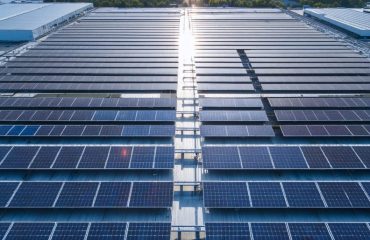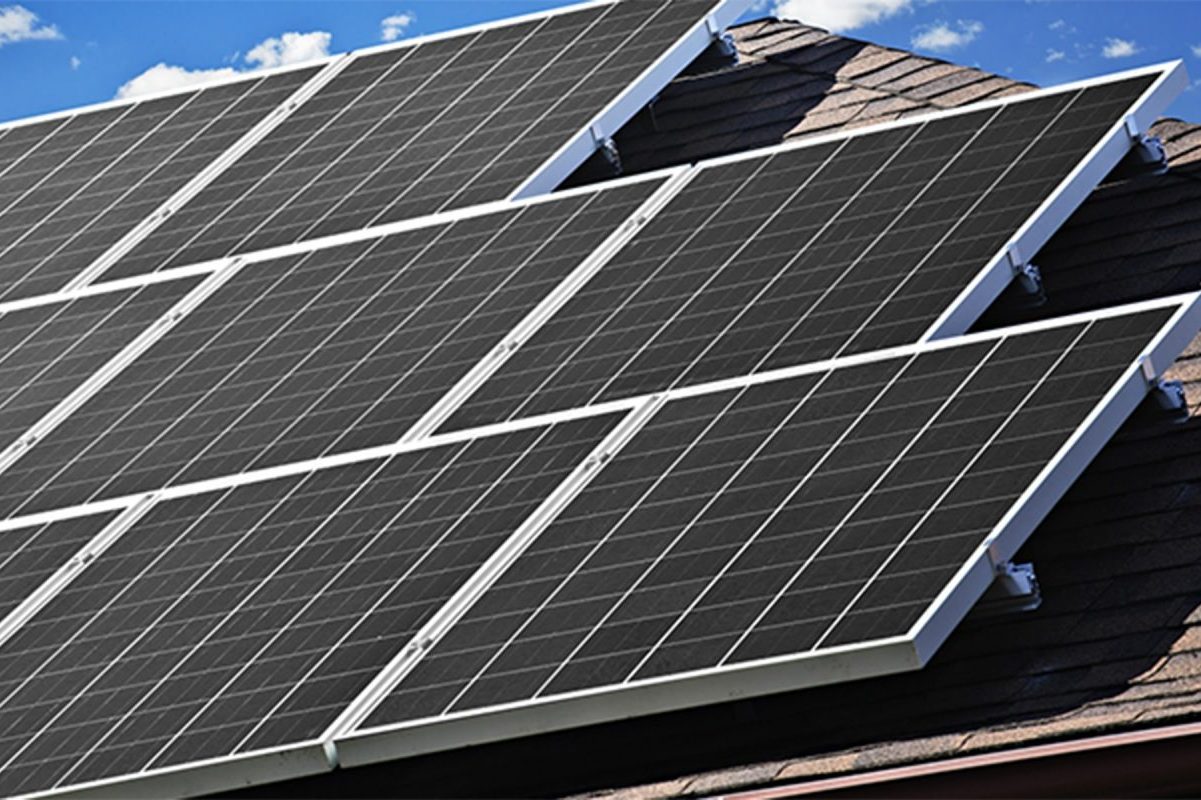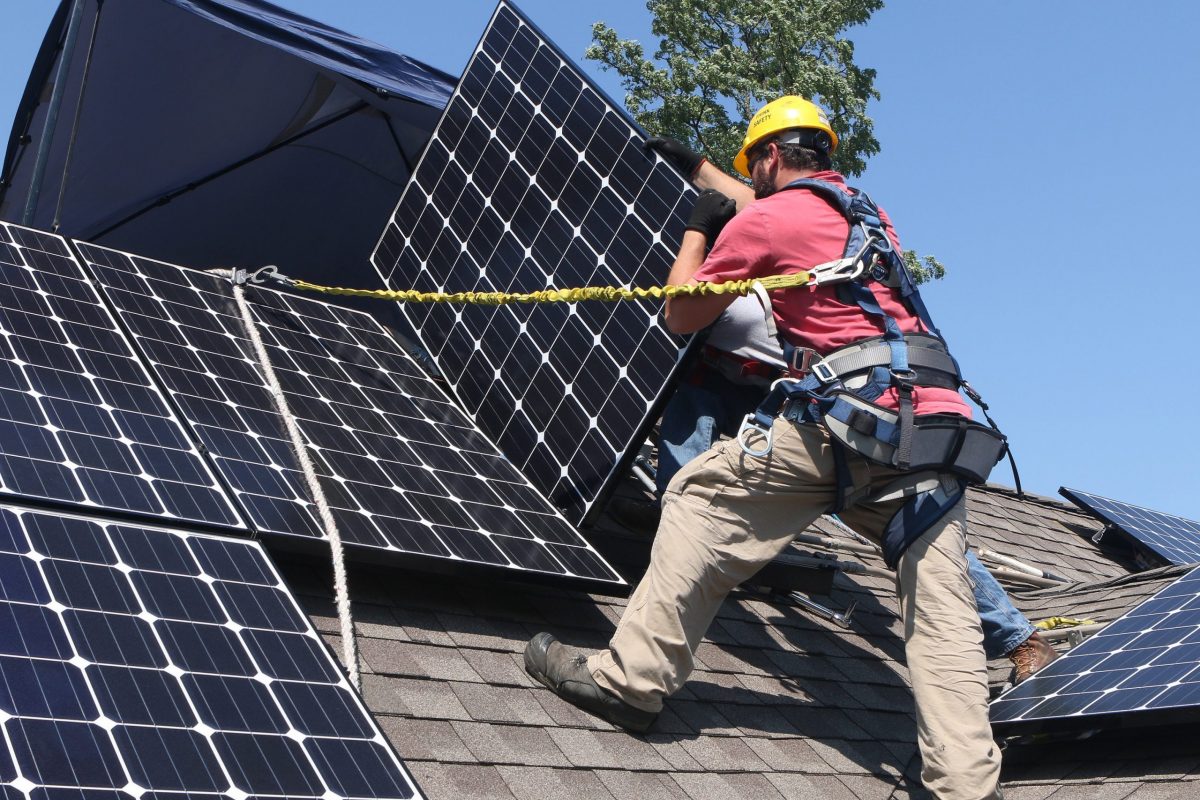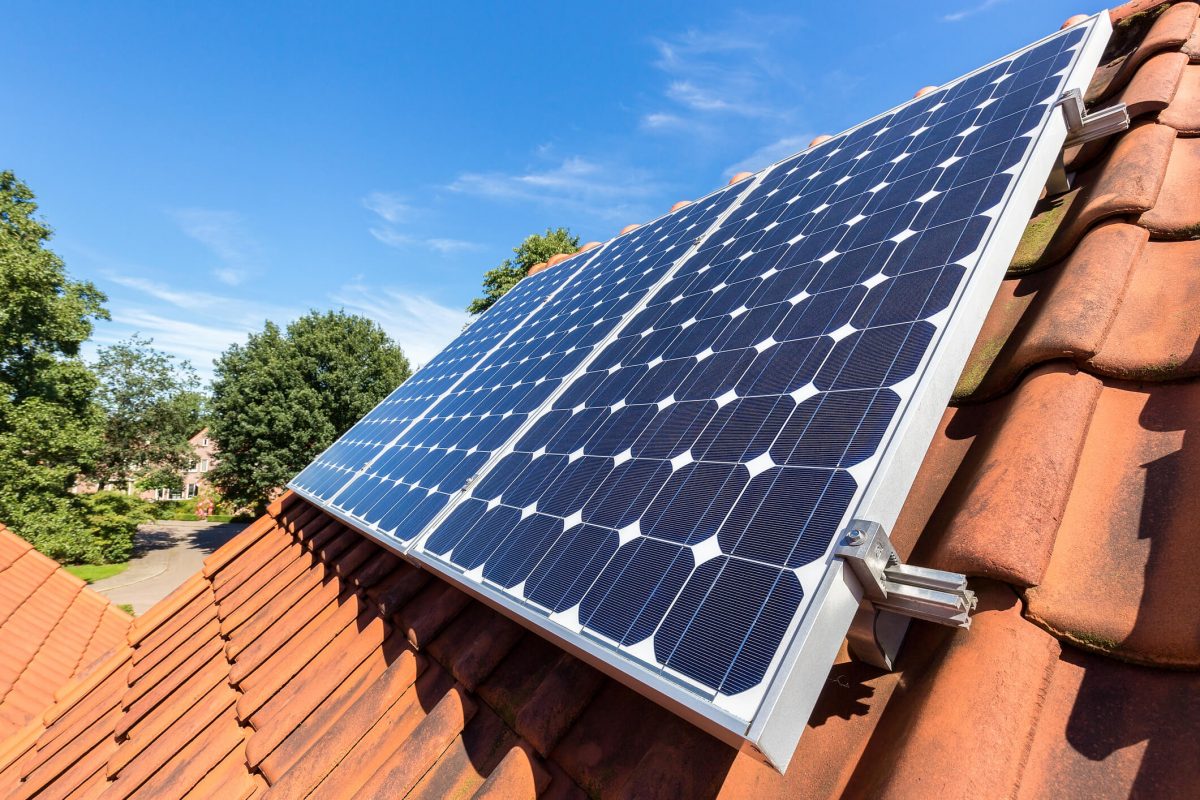Transform your home’s energy future while keeping more money in your pocket through renewable energy tax credits – a powerful financial tool that can cover up to 30% of your solar installation costs. The federal Investment Tax Credit (ITC) has been extended through 2032, offering homeowners unprecedented opportunities to embrace clean energy while securing significant tax savings.
Beyond federal incentives, a strategic combination of state and local tax credits can potentially offset 40-60% of your total renewable energy investment. Smart homeowners are increasingly leveraging these credits alongside emerging utility rebates and sustainable energy programs to maximize their returns on solar installations and other renewable energy improvements.
Timing is crucial – current tax credit rates are at their peak, but they’re scheduled to decrease gradually after 2032. By understanding and combining available incentives now, homeowners can secure the maximum financial benefit while contributing to a more sustainable future. Whether you’re considering solar panels, wind energy, or geothermal systems, these tax credits make renewable energy more accessible and financially rewarding than ever before.
This straightforward approach to clean energy adoption not only reduces your carbon footprint but also provides immediate tax advantages and long-term energy savings that can significantly impact your household’s bottom line.
The Federal Solar Tax Credit: Your Biggest Money-Saving Opportunity
How Much You Can Actually Save
Let’s break down the real savings you can expect with the 30% federal tax credit for renewable energy installations. For a typical home solar system costing $20,000, you could receive a $6,000 tax credit on your federal return. This means if you owe $7,000 in federal taxes, your liability would drop to just $1,000 after applying the credit.
The savings extend beyond solar panels. For example, a geothermal heat pump system priced at $25,000 would qualify for a $7,500 tax credit. Similarly, a home wind turbine installation costing $15,000 would earn you a $4,500 credit.
Here’s what makes this even better: the credit applies to both equipment and installation costs. If you spend $18,000 on solar panels and $7,000 on installation, you’ll get 30% back on the total $25,000 investment – that’s $7,500 in tax savings.
Remember, while the credit is non-refundable, any unused portion can be carried forward to future tax years. So if you only owe $4,000 in taxes the year you install a $20,000 system, you can claim $4,000 that year and carry the remaining $2,000 to the following year’s taxes.
These savings become even more substantial when combined with state incentives and reduced energy bills, making renewable energy increasingly accessible for the average homeowner.
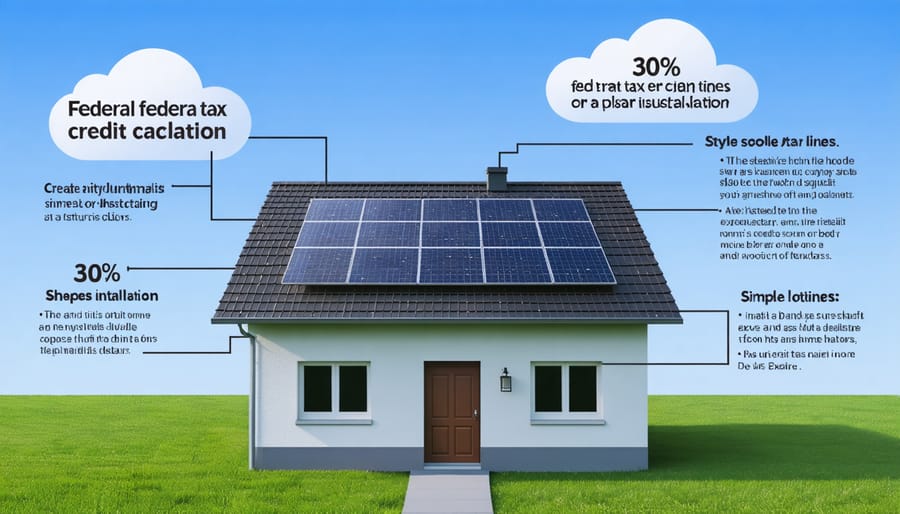
Qualifying for the Federal Tax Credit
To qualify for the federal renewable energy tax credit, your renewable energy system must be installed and operational by December 31, 2034. The credit applies to both residential and commercial installations, including solar panels, wind turbines, geothermal heat pumps, and fuel cells.
For residential installations, you must own the system outright – leased systems don’t qualify. The system must be installed at your primary or secondary residence within the United States. New construction and existing homes are both eligible.
The credit amount varies based on when you install your system. For systems installed between 2022 and 2032, you can claim 30% of the total installation costs. This percentage will decrease to 26% in 2033 and 22% in 2034. After 2034, the credit is scheduled to expire unless Congress extends it.
To claim the credit, you’ll need to file IRS Form 5695 with your tax return. Keep detailed records of your installation costs, including equipment, labor, and permit fees. If your tax credit exceeds your tax liability for the year, you can carry over the excess to the following tax year.
Important to note: the credit is non-refundable, meaning you must have sufficient tax liability to claim the full benefit. Consult with a tax professional to ensure you maximize your eligible credit amount and file correctly.
State and Local Incentives That Stack the Savings
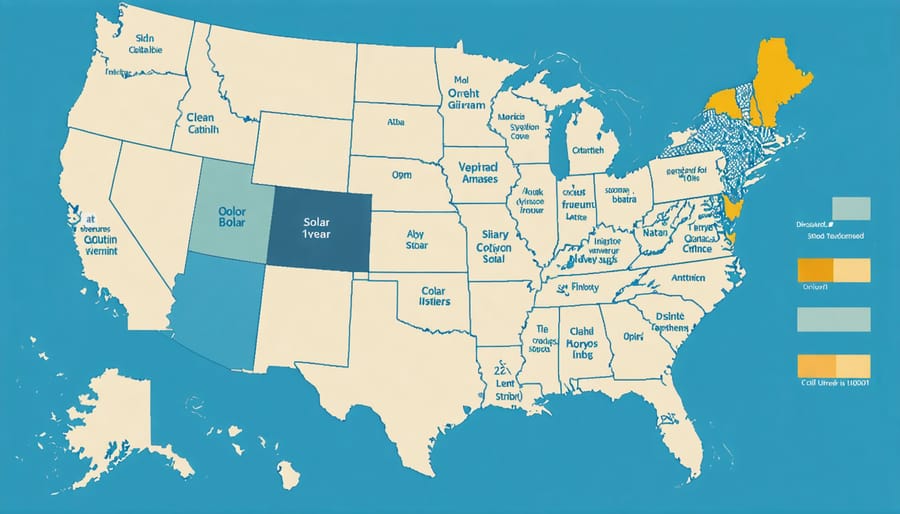
Finding Your Local Tax Incentives
Finding your local renewable energy tax incentives is easier than you might think. Start by visiting the Database of State Incentives for Renewables & Efficiency (DSIRE) website, which offers a comprehensive, searchable database of incentives by state and zip code. Your utility company’s website is another valuable resource, often featuring dedicated pages about local solar programs and rebates.
Don’t forget to check with your city and county government websites, as many municipalities offer additional incentives beyond state and federal programs. Local solar installers can also be excellent resources, as they typically stay up-to-date with available incentives and can help you navigate the application process.
Consider reaching out to your state’s energy office or environmental department, as they often maintain updated lists of available incentives. Many also offer free consultations to help you understand which programs you qualify for. Remember that incentives can change annually, so it’s worth checking these resources regularly to ensure you’re not missing out on new opportunities for savings.
Combining Multiple Tax Benefits
One of the most powerful strategies for maximizing your renewable energy investment is combining multiple tax benefits. The federal Investment Tax Credit (ITC) can work alongside state and local incentives, creating a substantial reduction in your overall costs. For example, you might claim the 30% federal tax credit while also benefiting from state tax rebates and property tax exemptions.
Many homeowners also take advantage of net metering programs while claiming their tax credits, effectively doubling their savings through both reduced energy bills and tax benefits. Some utility companies offer additional rebates that can be claimed alongside tax credits, and participating in community solar initiatives may provide extra financial incentives.
Remember that timing is crucial when combining incentives. While the federal tax credit can be carried forward if you can’t use it all in one year, some state and local incentives have specific deadlines or timeframes. It’s advisable to consult with a tax professional who can help you strategically plan which benefits to claim and when to maximize your savings.
Additionally, energy-efficient home improvements made alongside your renewable energy installation might qualify for separate tax credits, potentially increasing your total tax benefits even further. Just be sure to keep detailed records of all improvements and related expenses for tax purposes.
Making Tax Credits Work With Solar Financing
Solar Loans and Tax Credits
Combining solar loans with tax credits can help you maximize your solar savings while making solar installation more affordable. Solar loans allow you to finance your system with little or no money down, while tax credits provide significant savings after installation.
The federal solar tax credit (ITC) allows you to claim 30% of your total solar installation costs when you file your taxes. This credit can be applied to reduce your tax liability, effectively lowering the overall cost of your solar investment. What makes this combination particularly powerful is that you can use your anticipated tax credit to make a larger loan payment, reducing your long-term interest costs.
For example, if you install a $20,000 solar system using a solar loan, you’ll be eligible for a $6,000 federal tax credit. You can apply this credit to your loan balance once you receive your tax refund, significantly reducing your principal and monthly payments.
Many solar loan providers structure their products with this tax credit in mind, offering payment plans that anticipate the credit. Some even provide an 18-month window to make a larger payment using your tax credit, helping you avoid additional interest charges.
Remember to consult with a tax professional to ensure you can fully benefit from available credits and discuss the best timing for loan payments based on your tax situation.
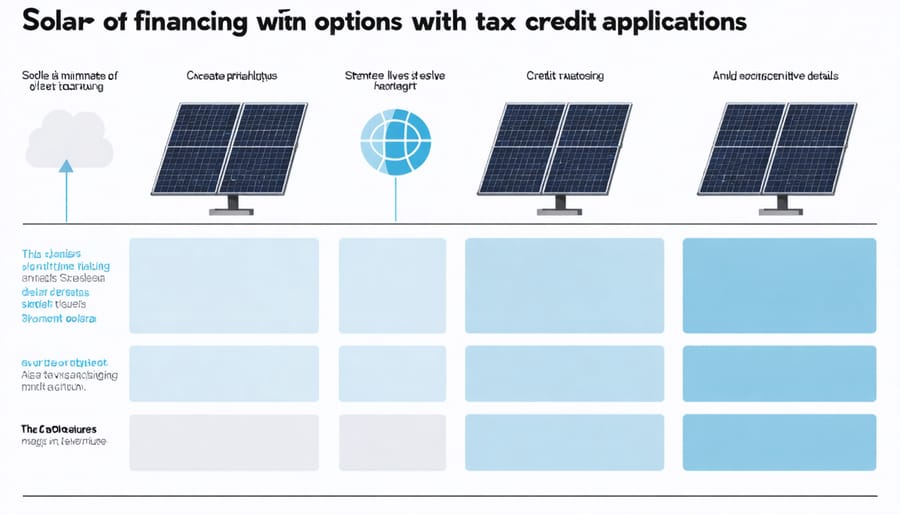
Cash Purchase vs. Financing Considerations
When considering renewable energy installations, the choice between cash purchase and financing can significantly impact your tax credit benefits. With a cash purchase, you’ll receive the full tax credit amount in the next tax year, assuming you have sufficient tax liability. This immediate benefit can substantially reduce your overall investment cost and accelerate your return on investment.
Financing options, while requiring less upfront capital, still allow you to claim the full tax credit. However, you’ll need to carefully consider how loan payments align with your tax credit timeline. Many solar loans are structured to accommodate the tax credit, offering higher payments initially that can be reduced once you receive your credit.
Some financing programs even allow you to make an optional balloon payment using your tax credit, which can help reduce your monthly payments. Keep in mind that interest paid on solar loans may be tax-deductible if they meet home improvement loan criteria.
For maximum financial benefit, consider combining your payment strategy with other incentives. Many utilities offer additional rebates for cash purchases, while some financing programs partner with manufacturers to provide special rates or extended warranties. The key is to evaluate your current financial situation, tax liability, and long-term energy goals before deciding which payment method best suits your needs.
The time to embrace renewable energy has never been more advantageous. With federal tax credits at historic highs and the proven cost-saving benefits of renewable energy systems, homeowners have a unique opportunity to make a smart investment in their property while contributing to environmental sustainability. The combination of reduced installation costs, increased energy independence, and substantial tax savings creates a compelling case for making the switch now.
By taking advantage of current tax incentives, you can significantly reduce your initial investment while securing long-term energy savings. The federal tax credit of 30%, combined with state and local incentives, makes this an optimal time to invest in renewable energy systems for your home. These benefits won’t last forever, and acting now ensures you maximize your potential savings.
Don’t wait to start your renewable energy journey. Connect with qualified installers, explore available incentives in your area, and take the first step toward energy independence. Your wallet – and the planet – will thank you for years to come.



